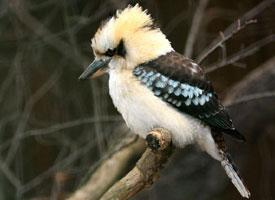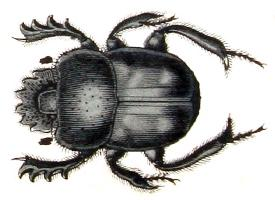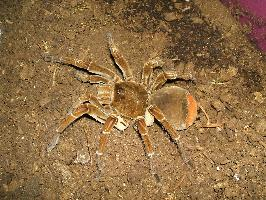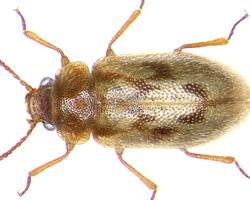
Váhy a míry
| Délka | 45 cm |
|---|
Popis zvířete
The Laughing Kookaburra (Dacelo novaeguineae) is a distinctive and charismatic bird species native to eastern Australia, with its range extending into the southwest of the continent. It belongs to the kingfisher family, Tree Kingfishers, known scientifically as Halcyonidae. Despite being part of this family, the Laughing Kookaburra diverges from the typical kingfisher profile of fishing for its food, instead feeding on a wide variety of terrestrial prey.This bird is robust and sizeable for a kingfisher, with adults reaching lengths of 28 to 42 cm (11 to 17 inches) and weighing between 190 and 400 grams. It has a stout and compact body, a large head with a very strong, pointed bill designed for hunting and consuming a wide variety of prey. Its plumage is predominantly brown and white, with striking dark brown eye stripes that run across its face and a light blue patch on the wing coverts. The male can be distinguished by the blue hues on its wing feathers, while the female's plumage is slightly duller with a hint of brown in the blue areas.
The Laughing Kookaburra is perhaps best known for its call, which is unmistakable and often used as a sound symbol for the Australian bush in movies and soundtracks. This call sounds remarkably like echoing human laughter, ranging from a variety of chuckles and hoots to loud, prolonged cackles and guffaws, which is why it has been aptly named the "Laughing Kookaburra." These vocal displays are often performed in chorus to establish territory and communicate within the family group.
Laughing Kookaburras are highly territorial and live in established family groups, with offspring from previous seasons often staying back to help their parents raise the next generation of chicks. This cooperative breeding behavior is fascinating, as it showcases the complex social structure and bonding within these bird communities.
Their diet is varied and includes insects, reptiles, small mammals, and occasionally the young of other birds. They are known for their remarkable hunting technique, where they perch silently before swooping down on their prey, catching it with their strong beak, and then beating it against a perch to kill it before swallowing.
Laughing Kookaburras are commonly found in a range of habitats from humid forest to arid savanna, as well as adapted environments such as suburban parks and gardens, where they are often welcomed for their pest control attributes. Despite their adaptability, habitat destruction and changes in the landscape can impact their populations, making conservation efforts important for their continued wellbeing.
The Laughing Kookaburra plays a significant role in Australian culture and is featured in popular folklore and Aboriginal stories, symbolizing a good omen. Its distinct call at dawn and dusk is often referred to as the "bushman's clock."
In conclusion, the Laughing Kookaburra (Dacelo novaeguineae) is a remarkable bird with a unique call that echoes the essence of the Australian wilderness. Its intriguing behaviors, diet, and social structure make it a subject of interest for bird enthusiasts and researchers alike. As an emblematic figure of the Australian landscape, it remains a symbol of the country's rich biodiversity and natural heritage.
Podobná zvířata
Nové fotografie zvířat
Top 10 zvířat
- Chinese water dragon (Physignathus cocincinus)
- Galápagos tortoise (Geochelone nigra complex)
- Dolphin gull (Leucophaeus scoresbii)
- Japanese macaque (Macaca fuscata)
- Colombian red howler (Alouatta seniculus)
- Sea urchins (Echinoidea)
- Diana monkey (Cercopithecus diana)
- Moustached guenon (Cercopithecus cephus)
- Colossal squid (Mesonychoteuthis hamiltoni)
- Common house mosquito (Culex pipiens)


